
The Surprised soul is faced with the new and unexpected. Things may momentarily seem distorted or warped before coming into focus.
Explore the works below. Before expanding the text, think to yourself:
What do you see?
What do you feel?
What might it be addressing?
What questions do you have?
Do you like it? Why or why not?
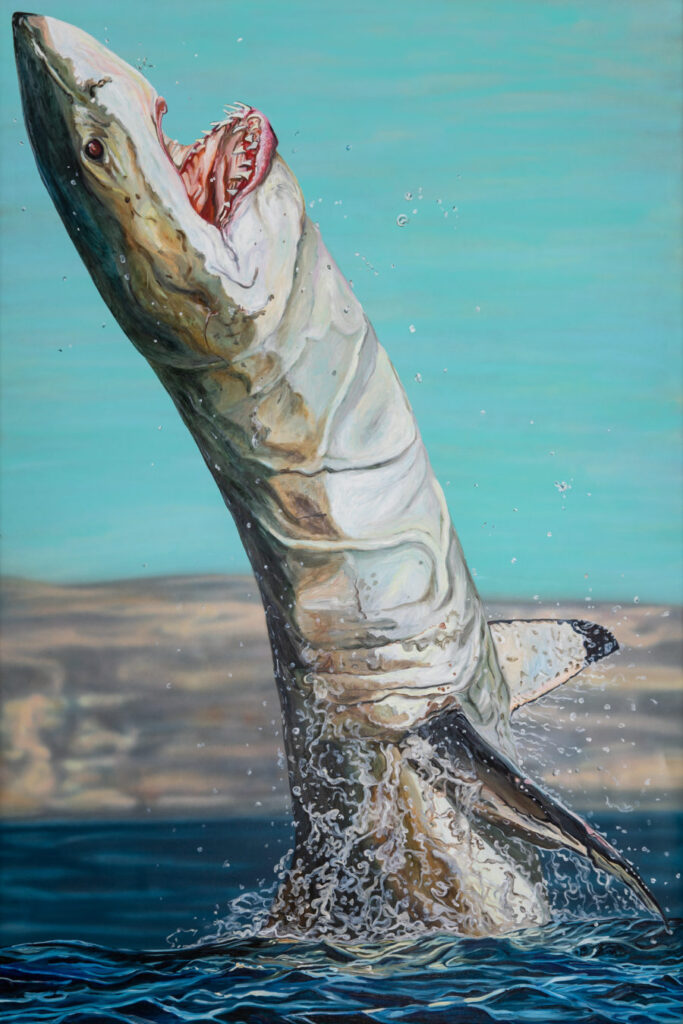
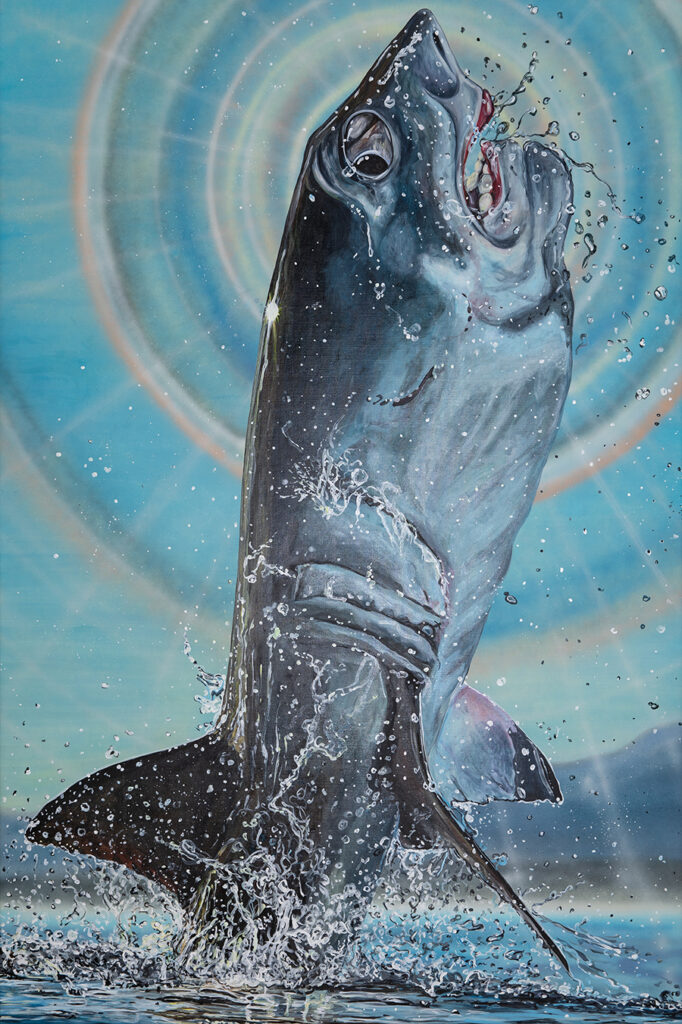
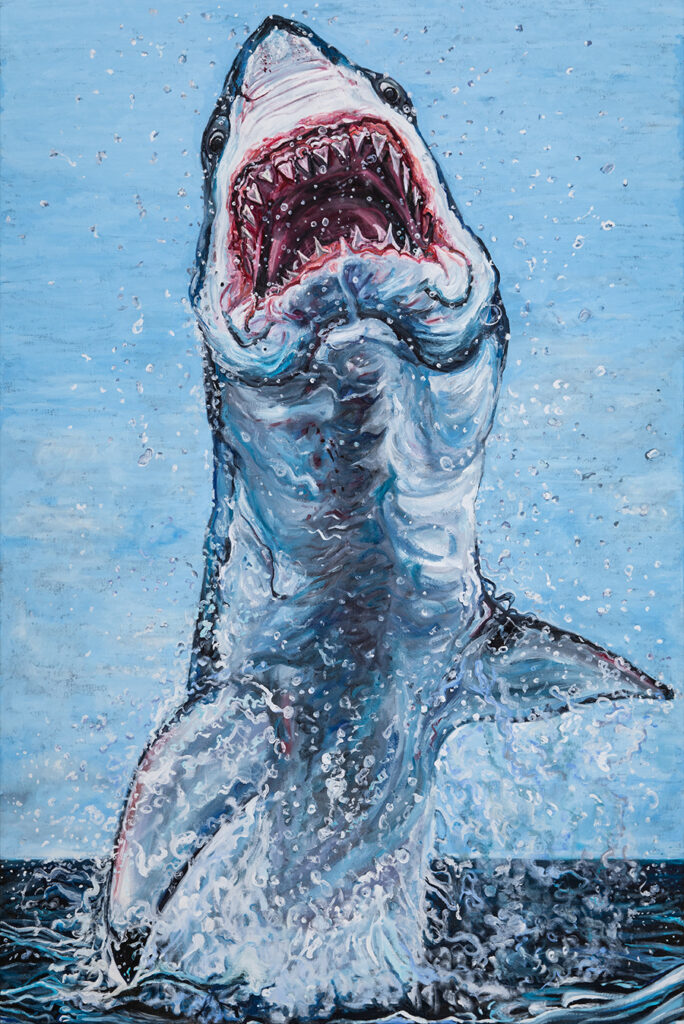
Expand to learn more
These are three paintings from Jana Euler’s series Great White Fear (2019). Great White Fear (GWF) is a series of paintings depicting sharks jumping out of the water, but with bodies that reveal themselves more as phallic representations than sharks. Erect phalli are no strange sight in the contemporary art sphere, but so few ironize and minimize their presence like Euler’s paintings. Despite the words of the title, these sharks spark no fear or sense of greatness in the viewer.
Accompanying these paintings was a poem by Euler:
“Who is afraid of what,
what is afraid of whom.
I think there is nothing in these paintings you would not see or miss, if left undescribed.
Besides maybe that it is like with the Mona Lisa,
they look at you wherever you are in the room”
What may Euler be commenting on by ironizing and ridiculing the phallic imagery?
The art world, despite the many successes of people of color, women and gender non-conforming people, queer and trans, and other historically marginalized peoples, is disproportionately filled and headed by white male artists.
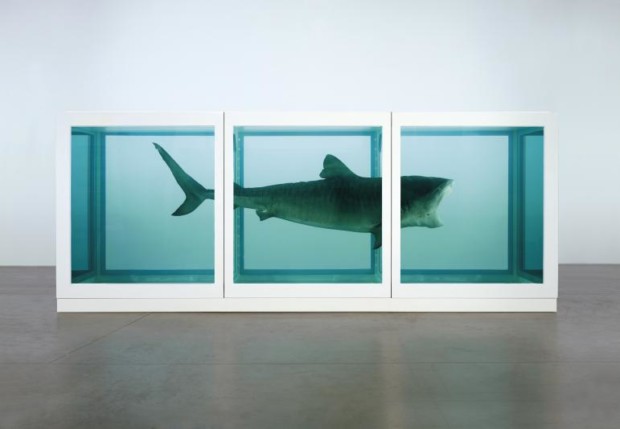
There is a chance that Euler is responding directly to Damien Hirst, an artist famous for his shark suspended in formaldehyde (left). This work, and many of Hirst’s others, are criticized for their abuse towards animals (that is a real shark he went and killed for this). In many ways, Hirst is the poster-child for white-male Contemporary art, an industry that much of the artists featured in this project reject.
In this case, the surprise is two fold. First, there is the surprise within the viewer upon the realization that, no these are not just sharks. The second, is the surprise within the own sharks’ expressions. Euler’s paintings create a visual dick joke as we watch these sharks explode out of the water.
About the artist
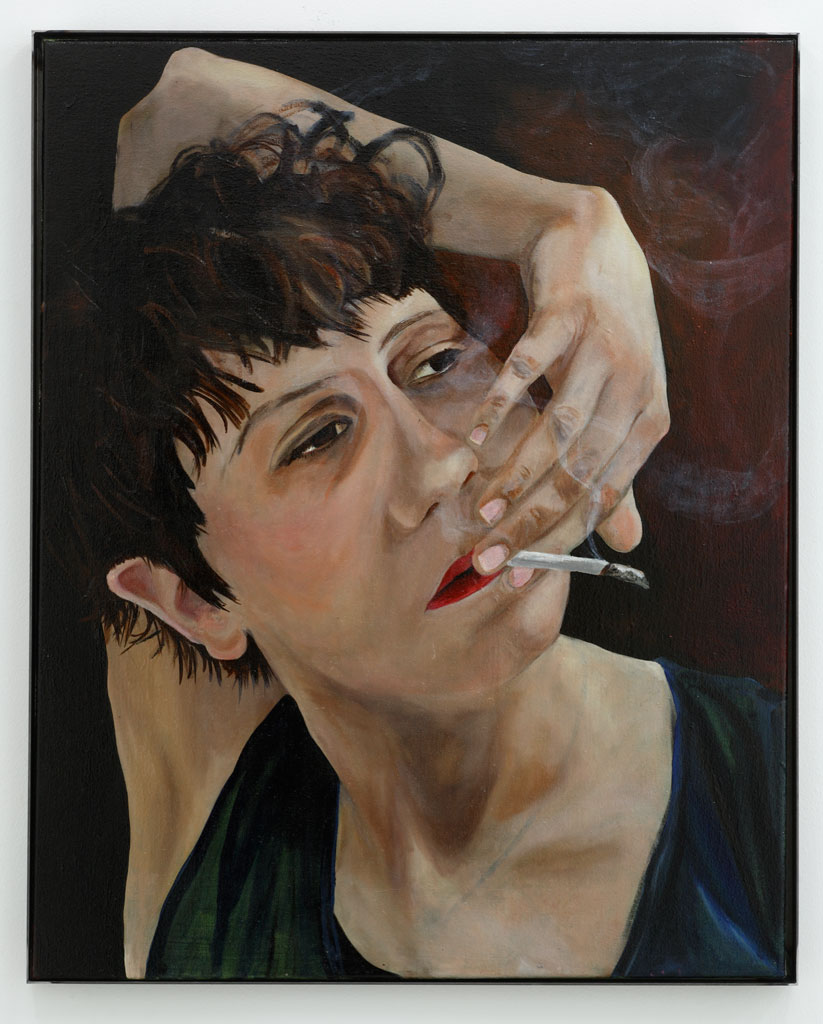
Jana Euler (b. 1982) is a German artist whose work distorts reality, questioning the authority on history—particularly art history. Her work is recognizable both through her deadpan comedy and her smoothed brushstrokes. Her warping of human and animal form recalls the styles of Neue Sachlihkeit (New Objectivity).

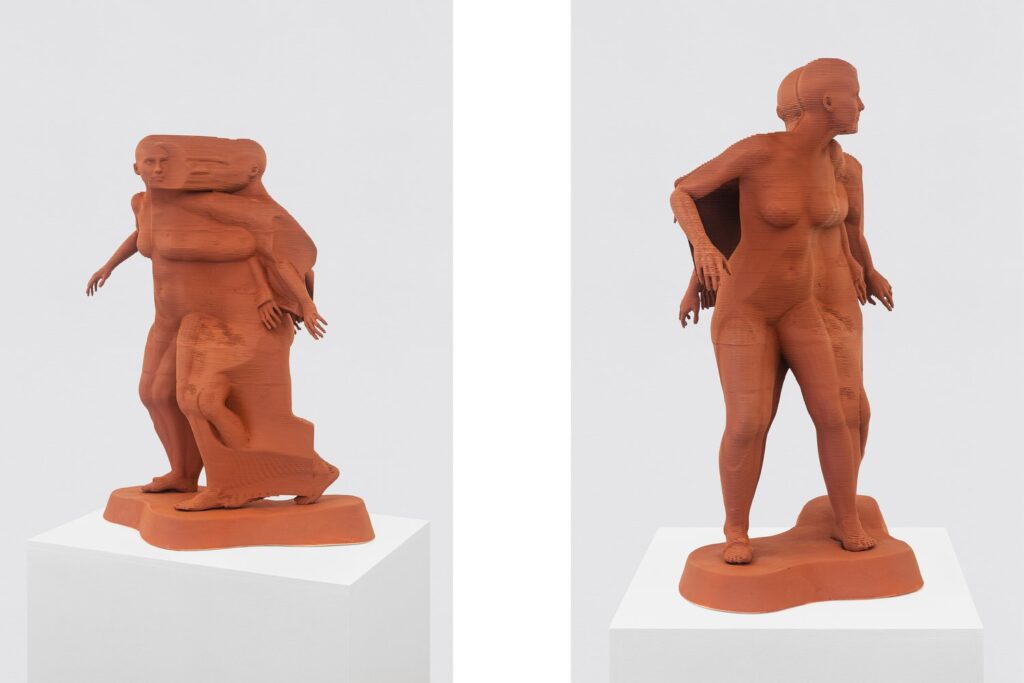
Expand to learn more
These are two sculptures (from two angles) from Juliana Cerqueira Leite’s series Species Specific (2019). The Species Specific series takes directly from the fossilizations found in Pompeii. Using 3D printing and the movements of dancer Meredith Glisson, Leite printed these multi framed sculptures that depict one second of motion. There are five in the series: Freeze, Run Away, Fight, Jump, and Beg for Mercy. For this, I selected Freeze and Fight. The two reactions here—Freeze and Fight—can all be considered normal reactions to being surprised or, in a more extreme way, blindsided.
How does your body react to surprise? What about fear? Have you thought about the intuitive reactions your body has?
About the artist
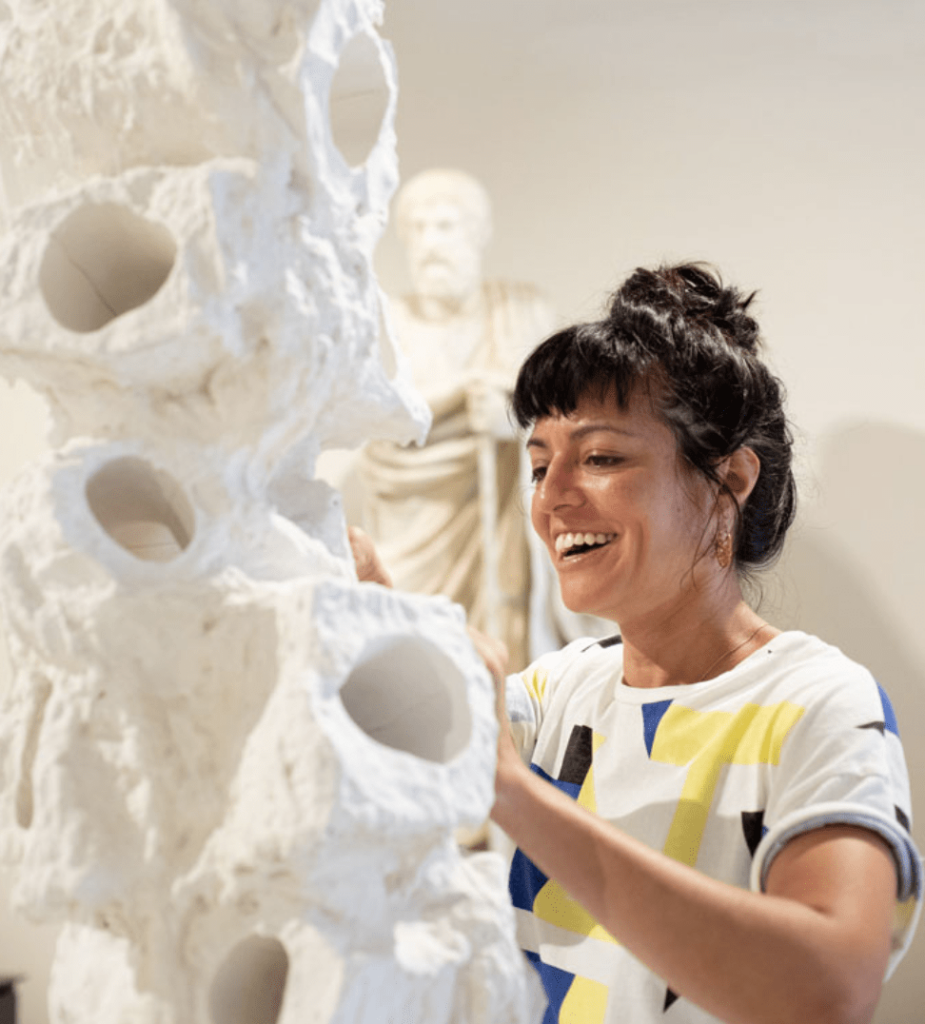
Juliana Cerquerira Leite (b. 1981) is a Brazilian-American artist based in New York who is best known for creating large sculptures exploring the human body: its physical presence and its absence. She is also very inspired by ancient cultures and events.
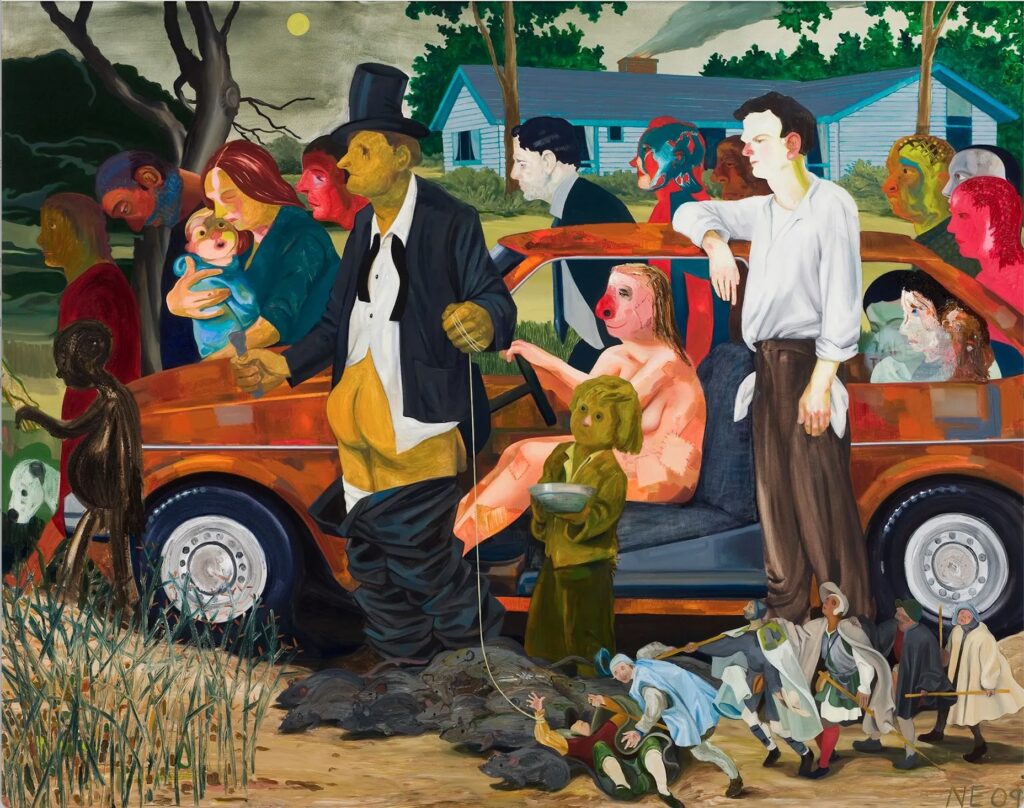
Expand to learn more
This is the painting The Triumph of Poverty (2009) by Nicole Eisenman. The Triumph of Poverty depicts a puzzling scene, one that gets weirder the more you look at it. Each character is odd, with something separating them from our realm of reality. In the foreground, a man in a suit holds on to a string attached to a miniature human who falls to the ground, tripping the procession behind him. The man in the suit himself is one of the first things you notice, with his lower body rotated 180 degrees, putting his ass in the front. This may be an allusion to “Ass Backwards” which describes something contrary to the expected and the normal.
What do you think Eisenman intends to portray in this scene? Do you see yourself in these characters? Eisenman makes works that are satirical, often making fun of humanity and our intricacies. Where are these people coming from and where are they going? What is waiting for them at their destination?
About the artist

Nicole Eisenman (b. 1965) is a French-born American artist who works primarily in painting, and more recently in sculpture. She is best known for her figurative oil paintings that play with themes of sexuality, irony, and caricature. Stylistically, Eisenman draws from the social and political legacy of German expressionism, most obviously through their use of vibrant, jarring colors and shapes as well as a focus on individual emotion.